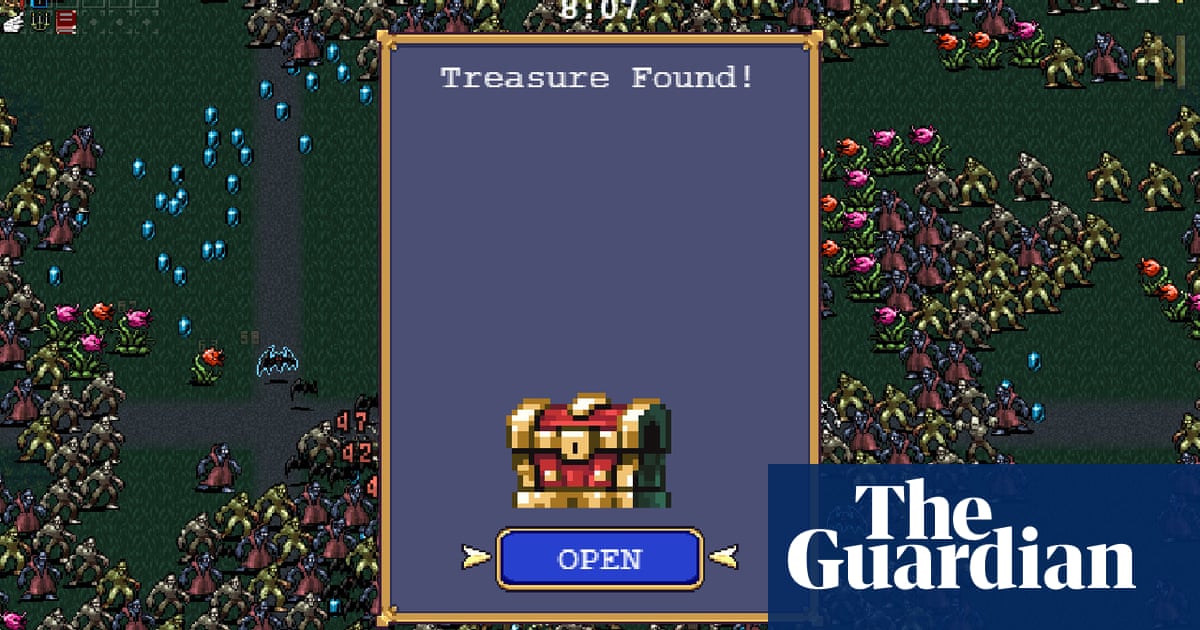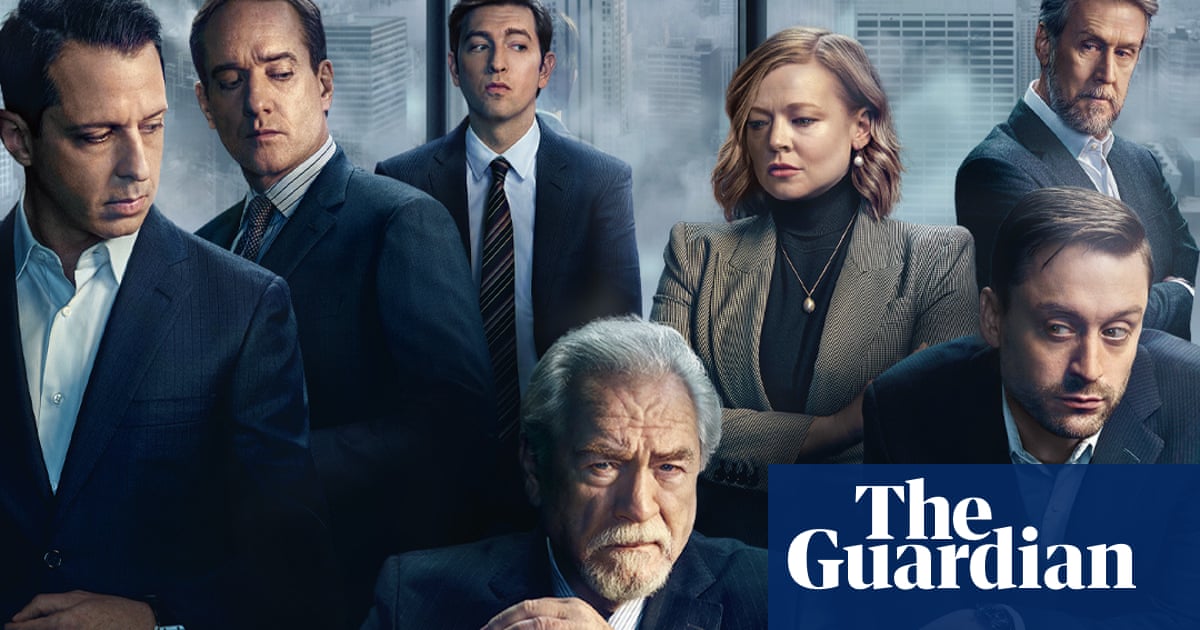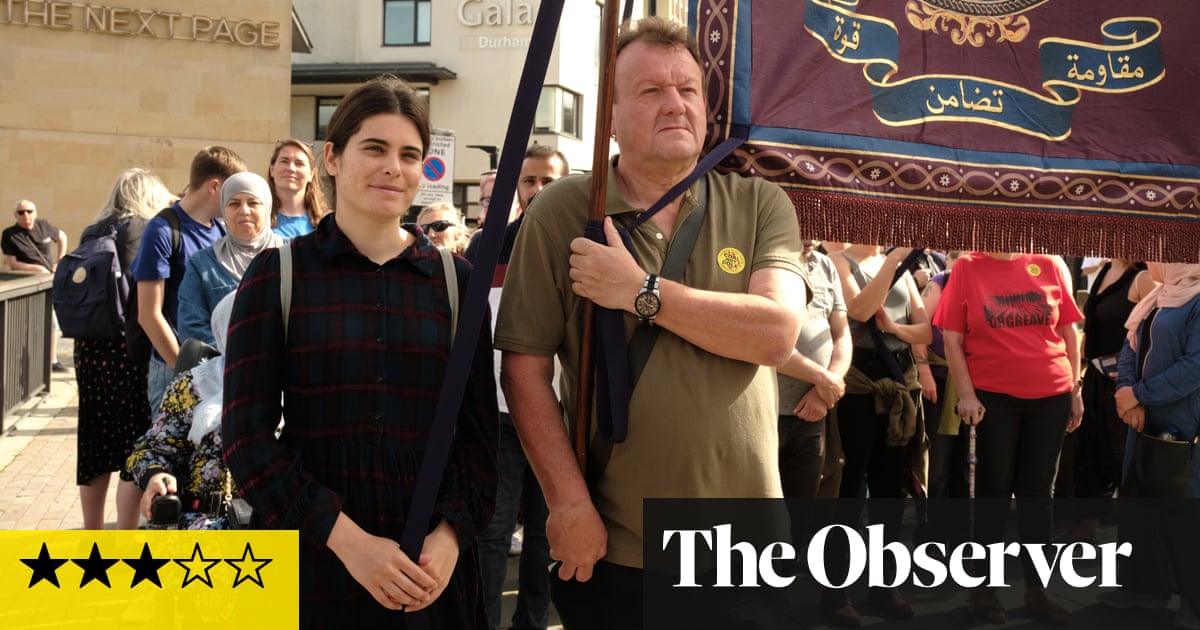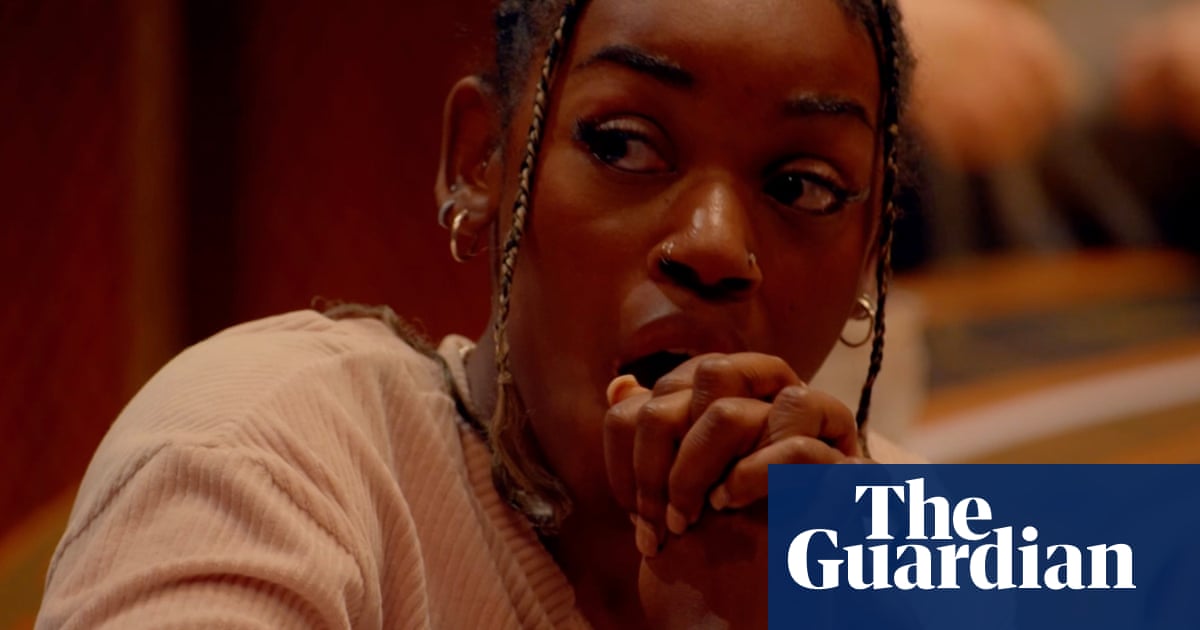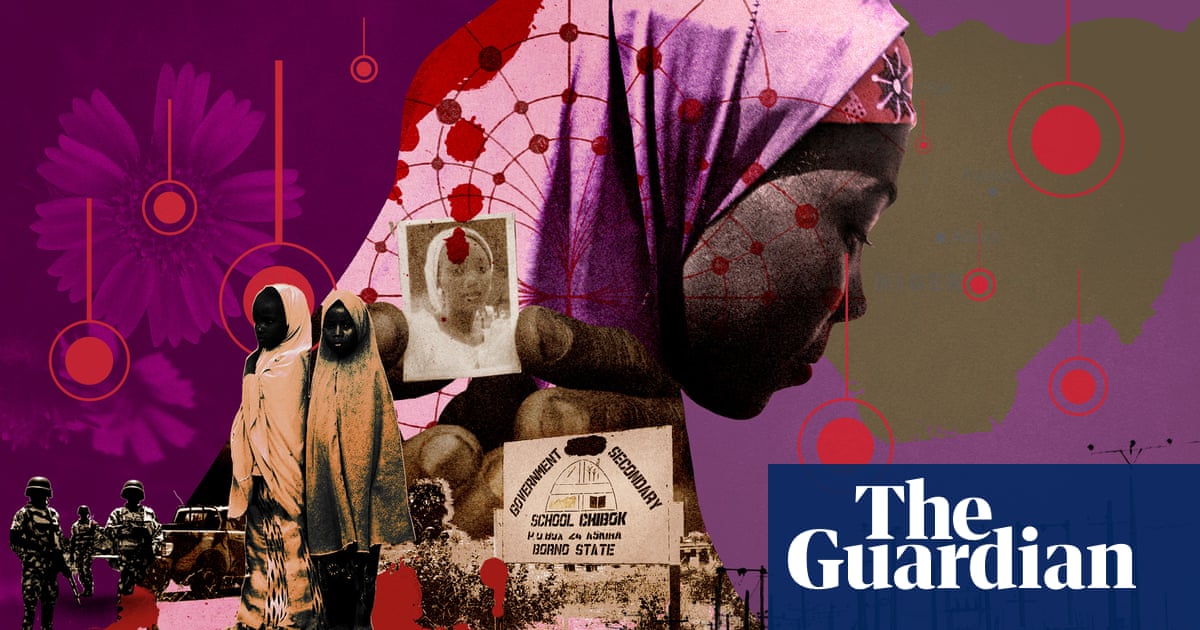
teve Pemberton and Reece Shearsmith are back with a sixth season of TV’s most devilishly imaginative comedy, Inside No 9 – a show that uses its anthology format not only to tell a different story in each episode but to flit constantly from genre to genre. With the only premise being that every No 9 takes place within a space carrying the number 9 (normally a room or a house, although the series has also located itself in a train compartment, a numbered police car and an office cubicle) it can be a silent comedy one week and a psychological thriller the next. As writers, actors and occasionally directors, the pair have shown that they can switch from bleak domestic drama to Shakespearean light comedy to full-on horror without dropping a stitch.
Behind this eclecticism is Pemberton and Shearsmith’s deep fanboy knowledge of film, theatre, TV and pop culture, with many episodes constituting a festival of homages and references, often to the cult classics of the 1970s and 80s on which Inside No 9’s creators were raised. We asked the duo to pick eight of their favourites, and talk about their influences – some of them more obvious than others.
As for the new run, the stars are, as ever, reluctant to give any hints of what’s to come, though Pemberton does tell us to brace for a classic heist-planning story in episode one. “We tried to pull in a lot of different references there. But with a twist, of course … ”
The Trial of Elizabeth Gadge
Season 2, episode 3
A period piece with a heavy Hammer horror influence, set in a 17th-century English village where the arrival of two well-known witchfinders causes a moral panic that is both silly and scary
Shearsmith: It brings to mind Vincent Price: the seriousness with which they’re taking [the trial] is increasingly hysterical. You leap to Terry Gilliam I suppose, because of the look of it – Monty Python and the Holy Grail – but it was more the witch trials themselves. A lot of it was based on real cases, people actually putting beetles and mice on trial, trying to get them to talk. It’s ridiculous, but it’s women’s lives in the balance.
Pemberton: When you look at Witchfinder General, and the other film we love which is The Blood on Satan’s Claw, because of the period there’s a dirtiness and a grimness and a coldness about it all. I think the episode does have that.
Shearsmith: It was quite deliberate that we got Ruth Sheen to play Elizabeth. She’s such a great real actor, she’s been in so many Mike Leigh films. It mattered if they were going to kill her or not.
Cold Comfort
Season 2, episode 4
A telephone counselling service receives disturbing calls, in a tale told entirely via the office’s CCTV. The use of static cameras and long, unbroken takes is one of Inside No 9’s most impressive technical feats
Pemberton: I read a newspaper article about the Samaritans. The pressure it places on the people was really interesting. So we started talking about that, and then Reece remembered this thing on YouTube …
Shearsmith: A Canadian serial killer [Colonel Russell Williams], he’s killed these women, and there’s a three-hour interview where he gets called in for what he thinks is a routine interview about where he was ‘on the night of’. By the end, he’s confessed. It’s extraordinary.
Pemberton: Once we’d come up with the concept, we were determined to be very true to it. I looked back on the original Talking Heads: you watch Maggie Smith, and you don’t need to be cutting round all the time, you just stick with her face, and her telling you that story.
Nana’s Party
Season 2, episode 5
In suburbia, a special occasion leads to a family’s complete unravelling: addiction, adultery and a smothered desire for escape drive an episode where an elaborate prank threatens to cause huge embarrassment – or worse
Shearsmith: It was the first script we wrote for Inside No 9, and that was around the time we were both doing plays. We wanted to embrace the vicious side of Alan Ayckbourn: his play Absent Friends is a particularly nasty one.
Pemberton: The initial idea was a box on the table, and the whole tension of the episode was going to be: ‘Oh my god, you’re imagining a head in the box, like Seven.’
[Instead, Pemberton’s character hides under a table, using a fake birthday cake as cover.]
Pemberton: We went with the concept of eavesdropping and characters knowing things they ought not to know. It’s a very theatrical thing, it goes back to Twelfth Night. It gave a lightness of touch, but there’s definitely the Abigail’s Party bleakness, especially Lorraine Ashbourne’s character – the desperate wife who wants to have this affair. There were elements of the play Road by Jim Cartwright: this woman brings a soldier home who’s totally drunk, he can’t say anything and she’s imagining he’s in love with her. It’s that sadness, the pathos and the comedy, the farcical element. A play I did was Dead Funny by Terry Johnson, which ends with a custard pie fight but is underpinned by genuine trauma.
The Devil of Christmas
Season 3, episode 1
A family’s doomed holiday in an Austrian chalet drives a meticulously faithful pastiche of spooky 1970s anthology dramas, complete with a director’s commentary that tells us this is an artefact that is, for some reason, being re-examined
Pemberton: [1970s anthology series] Thriller was the one, they always seemed to have the same storyline. The husband’s trying to get rid of the wife, or the wife’s trying to get rid of the husband. They do have good twists, to be fair. But they have this studio-set feel where it’s filmed in a contained and cheapish way. We watched one where someone’s taking a shower and you can almost see the prop man with the little hose.
Shearsmith: Nigel Kneale’s [horror series] Beasts was a big influence, especially Jessica Raine’s character. There’s an episode called Baby - we sent her that. That style of acting where you’re playing all the subtext, it’s declaimed, like [performances at the open-air theatre in] Regent’s Park. I’ve read a few comments that we were mocking [those sorts of retro shows], but it’s lovingly recreated: we did it all on old equipment, we did the best we could possibly do.
Pemberton: [The producer] Adam Tandy got the actual unedited footage of a day’s filming of an episode of Z Cars. The moving between sets, watching the actors do a take and then relax – everything. It was really instructive in how stuff was filmed when it was all studio-based.
The Bill
Season 3, episode 2
Festering resentment and inadequacy cause a gang of old friends, sitting round a table as the last customers left in a restaurant, to argue over who will pay the tab. It turns nasty, but all is not as it seems
Shearsmith: [David Mamet’s debut film] House of Games became a thing to look at when we hit upon the idea for the ending. We’ve always liked that film.
Pemberton: Glengarry Glen Ross [written by Mamet] was one of our favourite plays/movies, because it’s that toxic masculinity, this one-upmanship between this group of people. We knew it was going to be a table of blokes, that kind of banter verging on bullying. It’s our northern version of David Mamet, I suppose.
[The horror begins with a game where the men stab the table between their splayed fingers … ]
Shearsmith: Everyone knows it from Aliens, with Bishop doing it ludicrously fast. We thought it was a funny idea that they’ve always played it – and it was a way of introducing a knife to the situation …
Dead Line
2018 Halloween special
Seven minutes into what seems like a rather unadventurous live episode, supposed technical difficulties signal a shift into a dizzying meta-horror where the production itself appears to be haunted, and Shearsmith and Pemberton play themselves
Shearsmith: Live episodes are 10 a penny now, they all do them: Holby City, EastEnders. You watch because you hope the actors might go wrong. So we played up to the idea of something going wrong.
Pemberton: We embraced the fact that it would look slightly like EastEnders. Because we knew we weren’t doing the full episode like that, it was fun to play with it being a little bit parodic, like an episode of Tales of the Unexpected.
[With viewers initially fooled into thinking they were watching a real cock-up, the episode recalled BBC One’s notoriously convincing 1992 mockumentary Ghostwatch … ]
Pemberton: One of the things we took from it, which has become part of the Ghostwatch folklore: how many times can you see Pipes [the ghost]. So we put several hidden ghosts through the episode. The other thing we looked at was Paranormal Activity, for the scenes being captured on some kind of CCTV. Those films are brilliant at creating tension through knowing something is going to happen.
Bernie Clifton’s Dressing Room
Season 4, episode 2
A beautifully sad two-hander about a middling comedy double act, Cheese and Crackers, reuniting 30 years after one of them ditched the other and gave up on showbiz. As they prepare backstage for a one-off gig, they bitterly rake over the past
Shearsmith: It’s a very [Barefoot in the Park playwright] Neil Simon scenario. It’s also quite particular to the 80s comedy that we grew up with: Little and Large.
Pemberton: There was a real double act called Cheese and Onion; one of them still performs. And the Krankies did the ventriloquist act, and people like Fogwell Flax who used to do impressions. The other influence was Celebrity Big Brother – Frank Carson’s dressing room! The idea of someone just dropping something into a conversation [in 2014’s CBB, Jim Davidson upset Linda Nolan by referring to her late husband being accused of stealing from Carson in 1995], and you’re saying, what did happen?!
[The episode ends with the duo singing their signature song: Tears of Laughter, written by Shearsmith and Pemberton after Our Last Song Together by Neil Sedaka was deemed too pricey to license … ]
Pemberton: I was listening recently to Cannon and Ball’s theme tune [Together We’ll Be OK] and it’s beautiful, especially in the wake of Bobby Ball dying. The idea of their song that they could give one last time in the room, it was elegiac, a wonderful way to end.
Love’s Great Adventure
Season 5, episode 3
A total surprise: horror gives way to earthy domestic drama, laced with tender comedy, about a family in financial trouble. Told via a series of partly improvised vignettes, there’s almost none of the show’s trademark clever plotting
Pemberton: Huge influences here were [Ken Loach dramas] Raining Stones and Riff-Raff. Raining Stones has this pervading dread that something can come into your house at any point and bring violence. But there’s a lot of humour in those films, as well as being desperately sad. Loach never gets credit for that. We also saw A Northern Soul, a documentary by Sean McAllister, just after we’d written this and it chimed perfectly: there’s a bit where this guy’s trying to get through to someone to talk about some money he owes, and he’s having to deal with this automated phone line. You see him repeating the same things over and over. Battling the system. The other thing that was a big influence was This Is England, one of the best dramas this century. Spending time with these characters, giving them the freedom to play long scenes: we’d never worked in that way before.
Shearsmith: It was very different from the mechanics of a normal No 9.
Pemberton: It was liberating.




